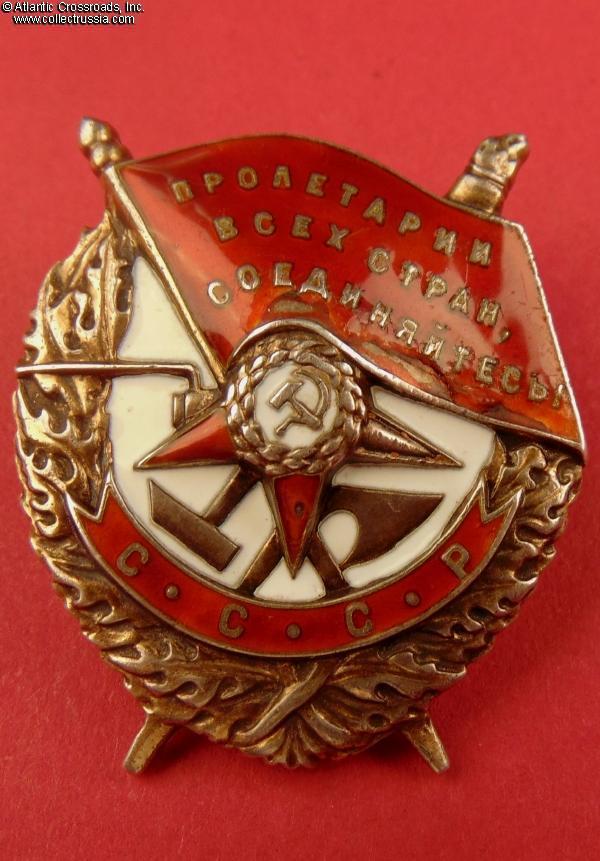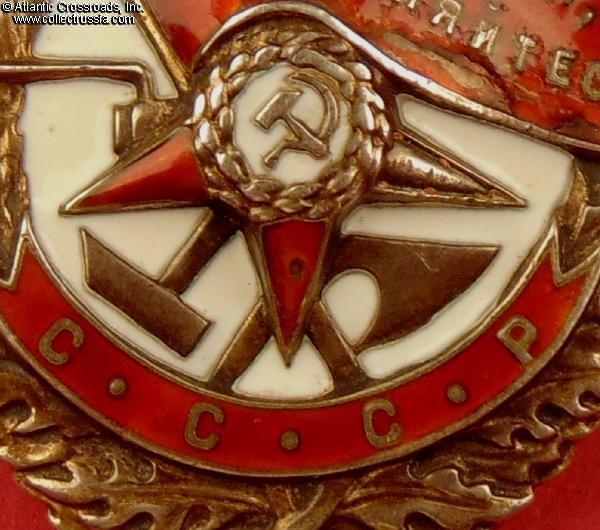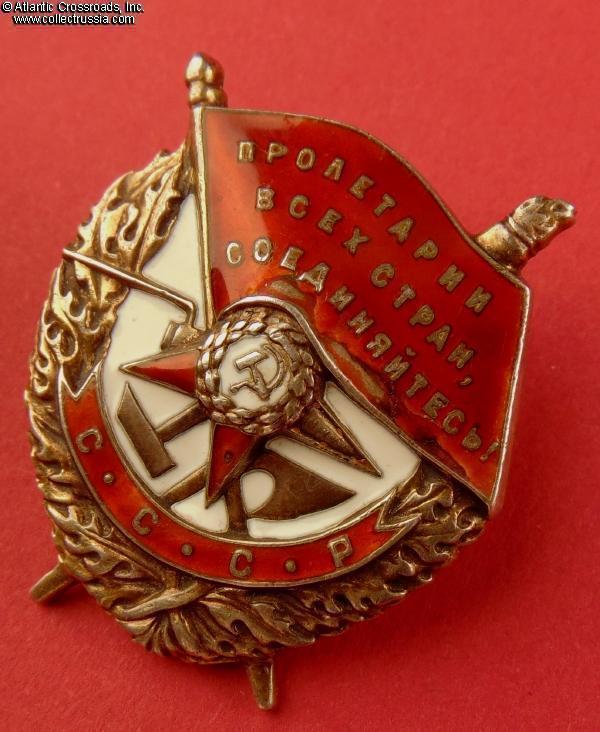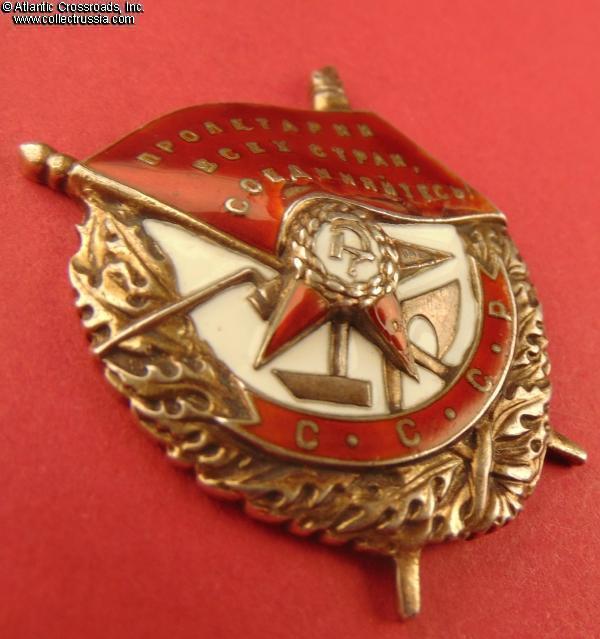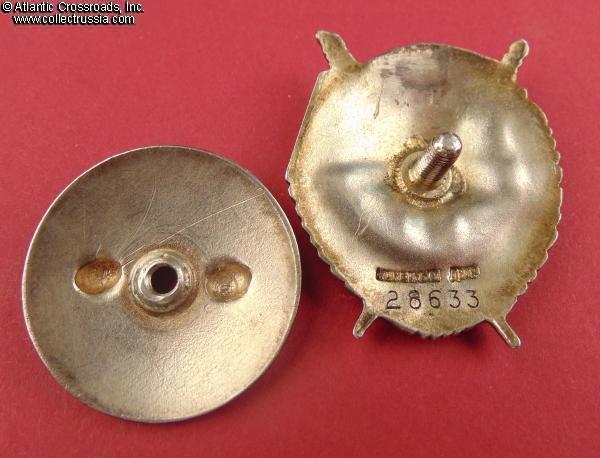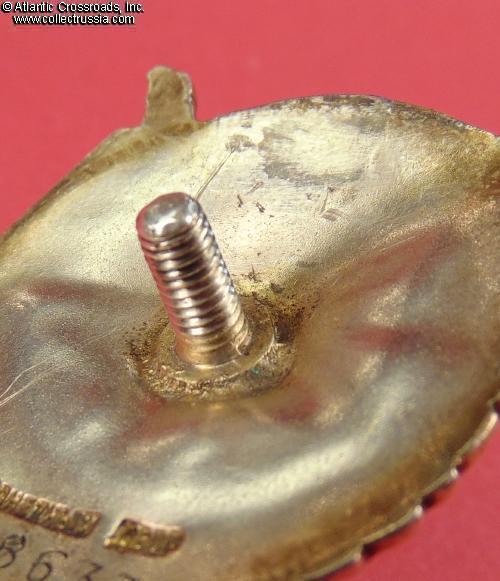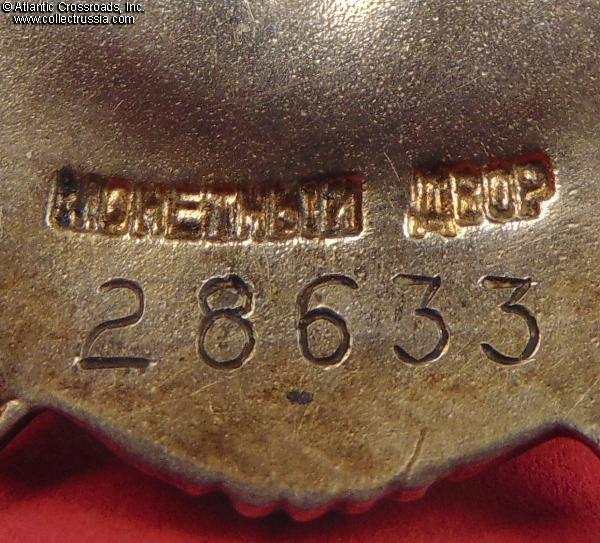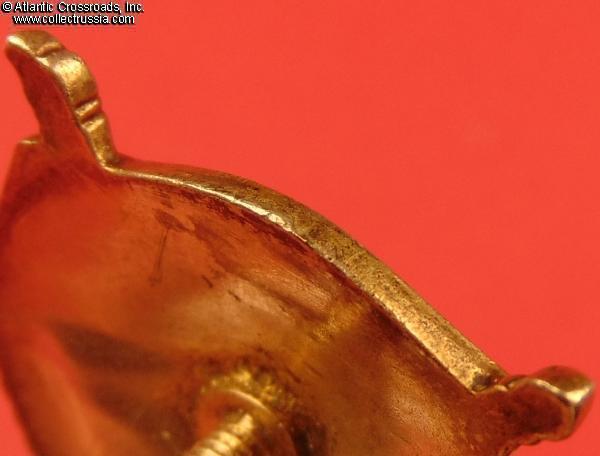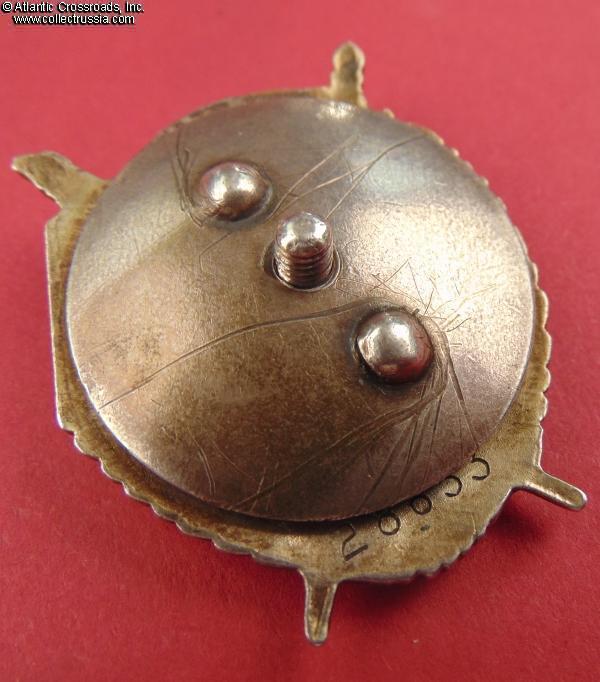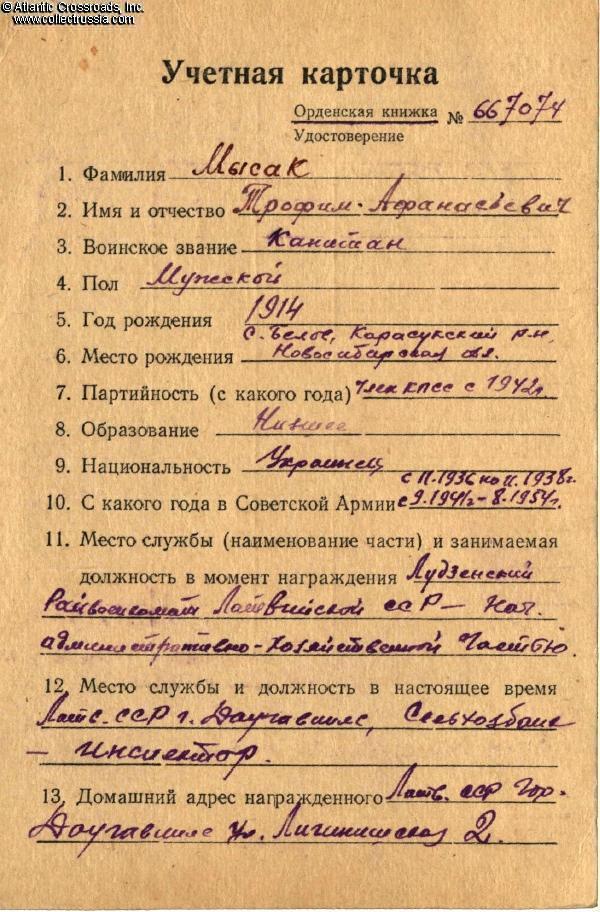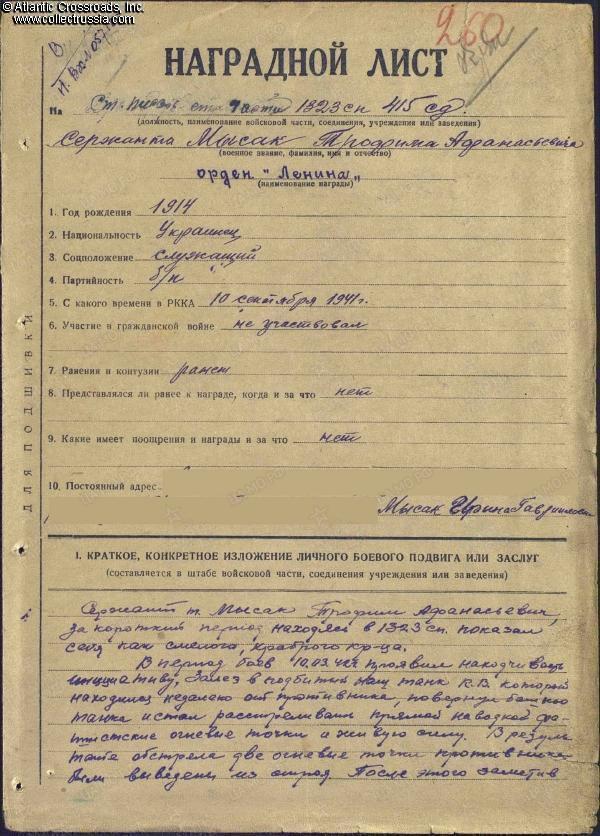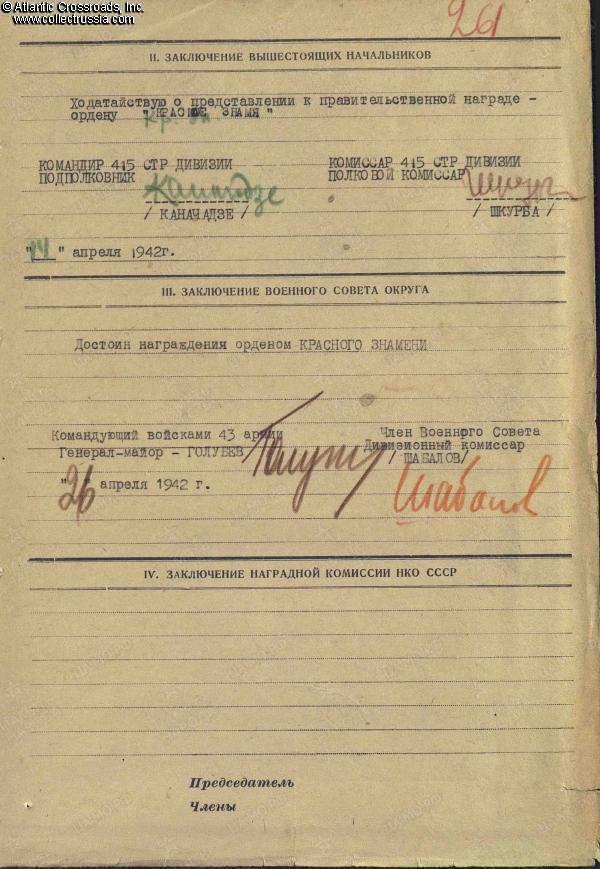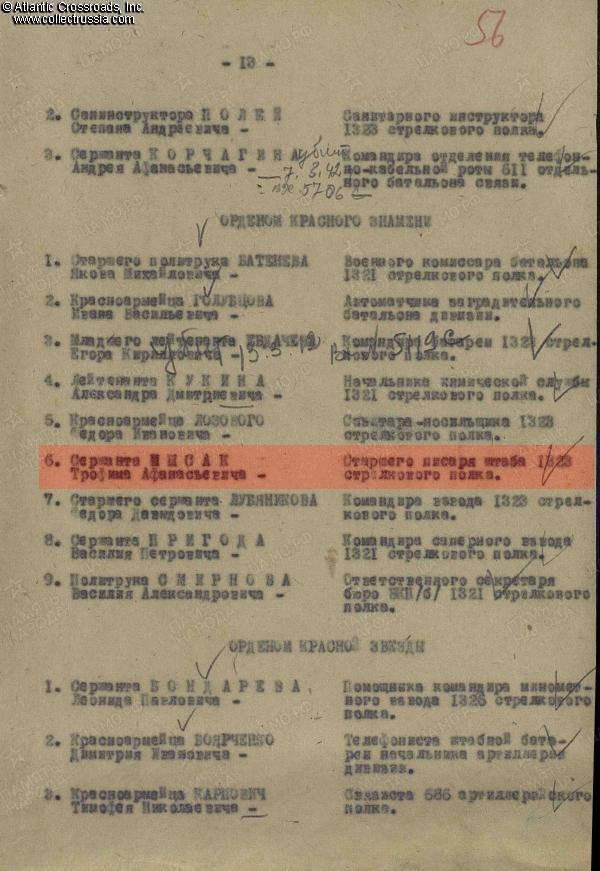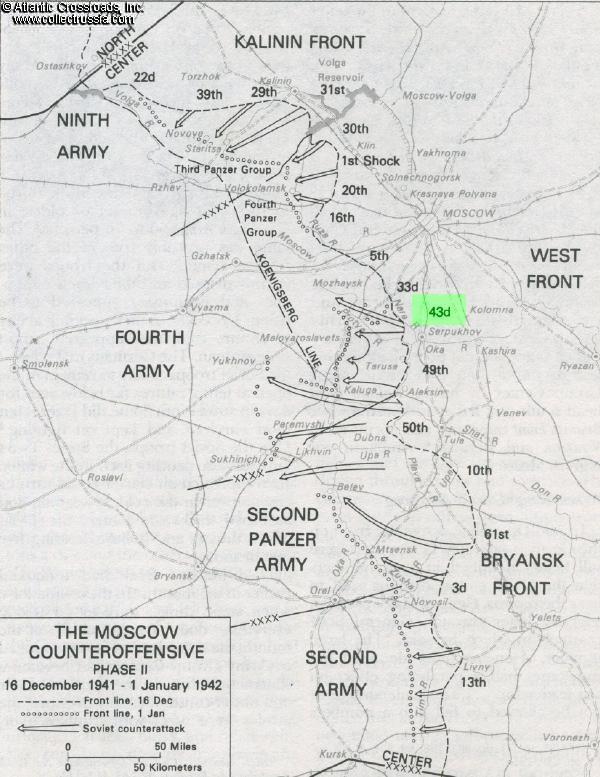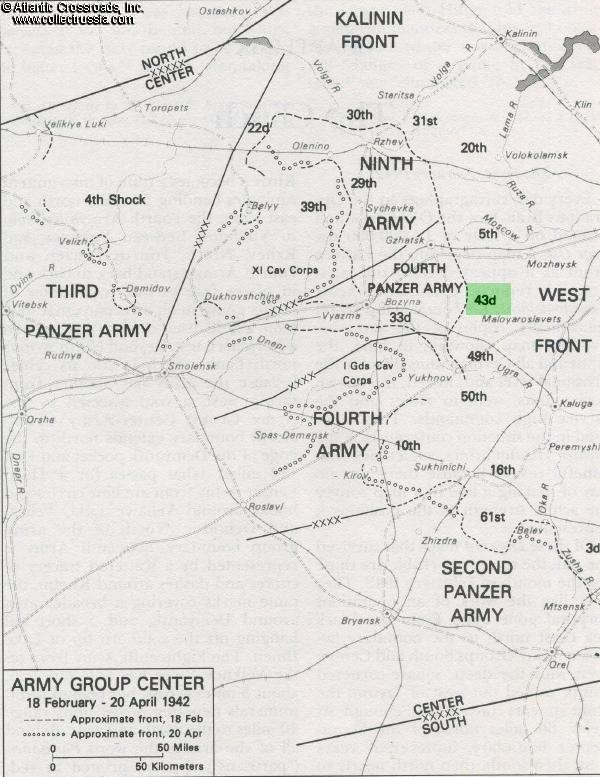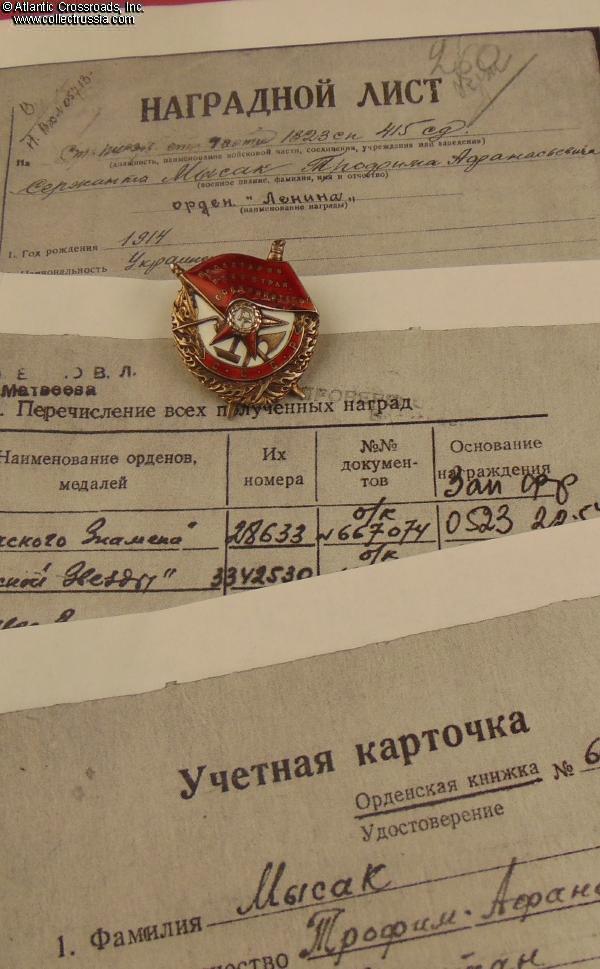Order of the Red Banner, Type 2, Variation 3, Sub-Variation 1, #28633 (according to Strekalov classification), awarded on 22 May 1942 to Sergeant Trofim Mysak (Трофим Афанасьевич Мысак), 1323rd Rifle Regiment, 415th Rifle Division, 43rd Army, Western Front, for outstanding personal bravery exhibited in combat in the central section of the front following the Battle of Moscow.
Silver gilt, enamels; measures 39.5 mm in height (from the top of the flag to the bottom of the wreath), 35.5 mm in width; weighs 21.2 g not including the screw plate. Features the so-called "geometric" style of the serial number engraving which is characteristic for its serial number range. The first word "Monetnyi" in the mint mark is slightly curved down. According to Durov and Strekalov, this piece was manufactured in the early part of 1942 at the Krasnokamsk Mint. / V. Durov, N. Strekalov, The Order of the Red Banner, p. 126/.
In very fine condition, far better than the average for the screw back type. The enamel on the banner shows beautiful luster and has less damage than usual. There are some small chips along the lower edge crudely repaired with what appears to be nail polish (probably very easy to remove with acetone if desired) and a minimal amount of flaking along the upper and right edges of the banner. The banner however is free of the typical rubbing or large chips. The red enamel on the star is missing on the right arm, has a chip to the lower arm that mostly does not penetrate to the silver, and is completely intact on the left arm. The enamel on the red plaque with "CCCP" is almost perfect, having only some microscopic flakes invisible to the naked eye. The white enamel is likewise almost perfect having just a tiny amount of surface wear in the center which is unnoticeable without magnification.
The details of the torch, flagpole and wreath are extremely well-preserved and crisp; a good amount of the original fire gilt finish is still visible throughout. On the reverse, there is a slightly irregular patina and light scratches near the top, suggesting that a makeshift suspension loop was at some point added and then carefully removed without leaving the usual telltale gouge in the metal. The badge however has not been fully converted to suspension and retains its original full-length screw post measuring well over 10 mm long from its base. An original period screw plate in silver is included. To reiterate, this attractive piece is overall much better preserved than typical for a screw back version.
Trofim Mysak was born in 1914 to an ethnic Ukrainian family in a village of the Novosibirsk region of Siberia. He received only an elementary school education prior to serving a stint in the Red Army in 1936-38. In September 1941, he was recalled to active duty, joining the 415th Rifle Division newly formed in Vladivostok - one of the Soviet "trump card" divisions hastily sent west from Siberia and the Far East to change the outcome of the Battle of Moscow. The division appeared at the front in mid-November, just in time for the Soviet counteroffensive, and for most of the campaign fought as a part of the 43rd Army, Western Front. During the first stage of the counteroffensive in mid-December, the army attacked near the city of Serpukhov southwest of Moscow and in the second phase during the second half of the month, advanced in northwesterly direction almost as far as Mozhaysk. By the early spring of 1942 however, the Soviet general offensive had largely stalled resulting in a defensive victory of sorts for the Germans (later, that success led to Hitler's overconfidence in the next winter campaign which ended up very differently at Stalingrad.)
Mysak, who had the rank of sergeant at the time, showed exceptional heroism in combat on 10 March 1942. The action took place just west of Maloyaroslavets and Yukhnov during the final, as it would turn out, futile effort of the 43rd Army to break the front of the German Fourth Army in the winter campaign. On his own initiative, Mysak climbed into a Soviet heavy KV tank that had been immobilized and abandoned in no man's land. Using the still untapped ammunition left in the tank, he put its main gun to good use blasting German weapon nests and personnel over open sights. He managed to silence two enemy emplacements before noticing two panzers that appeared in a forest clearance. Mysak disabled one of the tanks and forced the other one to retreat into the forest. He continued to use the gun until he emptied the tank's magazine after firing 54 shells.
In the days that followed, Mysak continued to show extraordinary valor on the battlefield, always choosing to be in the most dangerous spots. On 12 March, braving "a hail of bullets" he established a communication line between his regiment's command post and forward battalions. On 13 March, he did it again and resorted the broken link before he got seriously wounded. Three days later, Mysak's regiment commander recommended the heroic sergeant for the Order of Lenin - the highest Soviet decoration befitting the exceptional character of the feat. The division commander subsequently downgraded the recommendation to the Order of the Red Banner - a more humble award but still a very uncommon one at that stage of the war, especially for an NCO. The decoration was bestowed on 22 May 1945 by the general order of the Western Front.
Following the mid-March 1942 battles, Mysak served in his regiment as a record-keeper, apparently a non-combat role which was likely due to the severity of his wound. He therefore never received any other decorations during WW2, although uncharacteristically, he remained in the military after the war and at some point, became a commissioned officer. In the early half of 1950s, he was awarded with the Medal for Combat Service and Order of the Red Star, both apparently for the length of service, before retiring from active duty with the rank of captain. Afterwards, he settled in the city of Daugavpils in Latvia where he got a job as an agricultural bank inspector.
Research Materials: photocopy of the award record card and award commendation. Information about the 415th Rifle Division can be found online and in Volume IX Red Tide. Soviet Rifle Divisions Formed from June to December 1941 of the Soviet Order of Battle in World War II series by Charles Sharp.
Item# 42329
$1,875.00 Add to cart
